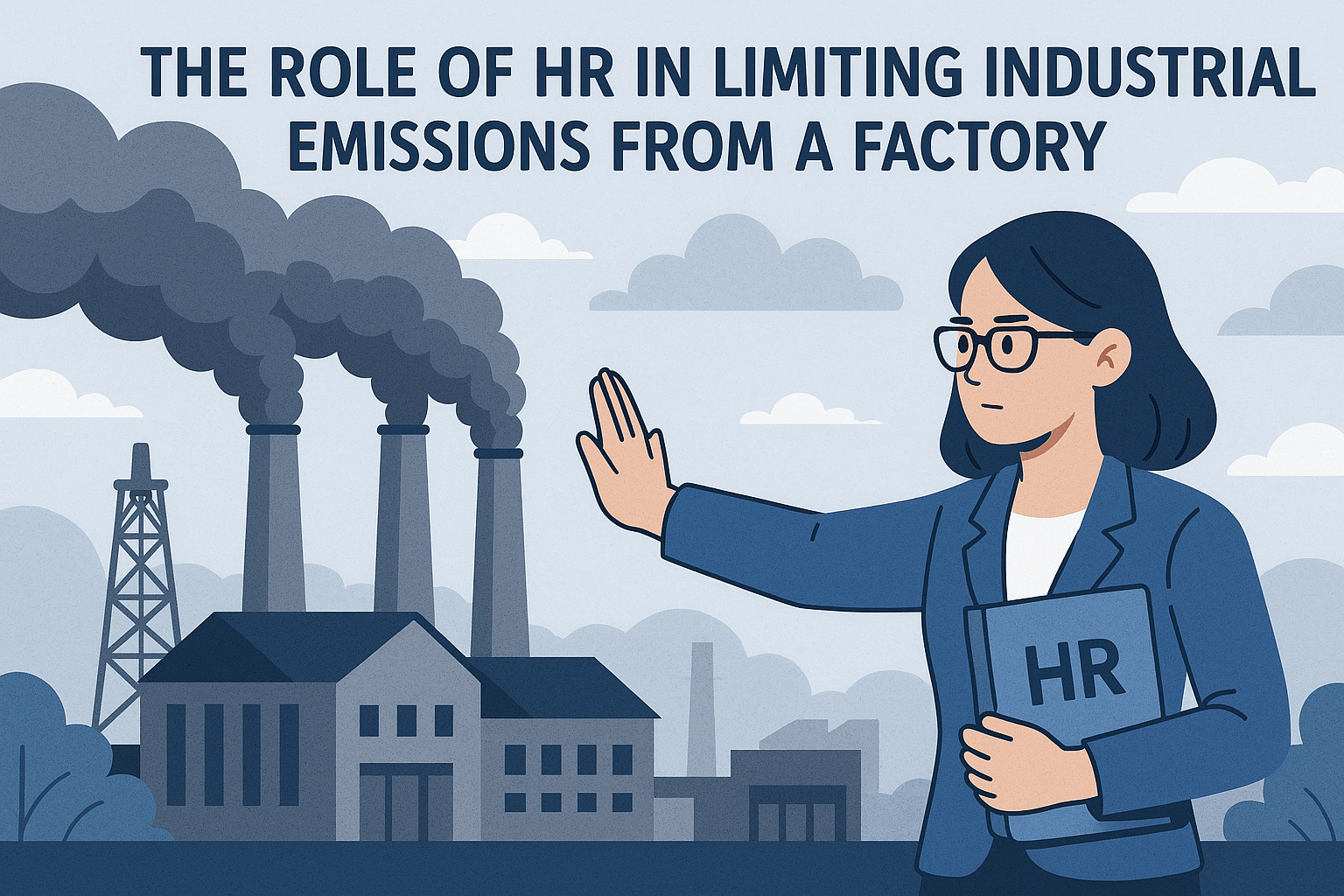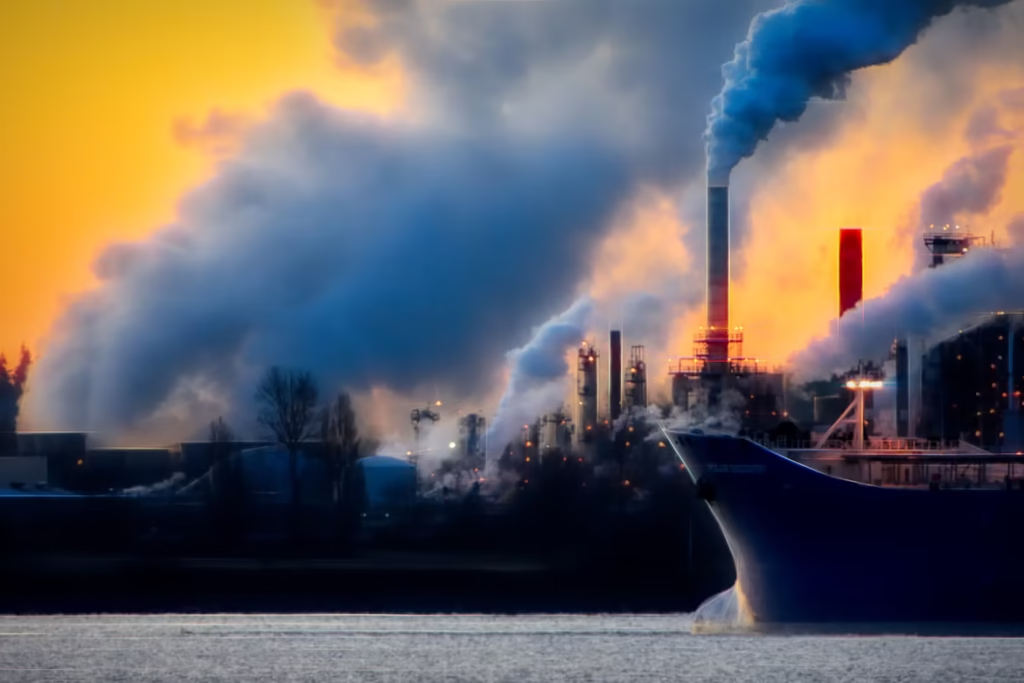
When you think about the duties of any human resources (HR) department, what comes to your mind? HR focuses on hiring and training employees, and various compliance-related matters.
However, times are changing, and the state of our environment is gradually degrading. Thus, regulations surrounding our environment are being tightened. Public awareness regarding such matters is also increasing.
Thus, HR teams around the world are having to step into a new role. This role now requires them to ensure that their company or factory is not harming the environment in any way. In particular, HR teams now have to ensure that emissions from their factories or manufacturing plants are not harming the environment.
The Need for Emissions Oversight from an HR Point of View

Globally, in 2023, CO2 emissions from fossil fuels and industry totaled 37.01 billion metric tons. Other toxic, non-CO2 emissions are also being constantly released into the environment as you read this article.
Around us, there are industries where manufacturing or chemical processing is routine. Emissions from these industries can quietly but quickly become a huge liability. HR professionals are now being asked to shape culture, systems, and training programs that actively help limit emissions.
It’s not like the role of HR has changed entirely or even drastically, as a matter of fact. The role of these specialized individuals has merely been extended to include a vital aspect of the modern industry.
Hence, for HR personnel, it is no longer just about ensuring workforce productivity. HR is now having to step into oversight roles as a responsibility to people, communities, and the planet.
Business owners must ensure that their HR teams are aware of these new responsibilities. Factories are under increasing pressure to reduce their environmental footprint. While engineers and operations teams handle the technical side, HR holds the key to sustainable behavioral change.
HR teams have access to hiring tools, policy design, and communication strategies that can support a cleaner industrial process. When used correctly, these tools can drive down emissions, help avoid lawsuits, and build a stronger, safer brand reputation.
Let’s try to elaborate on the role HR departments play in limiting industrial emissions from factories.
Embedding Environmental Awareness in Employee Culture
You’ll often see that factory workers are mostly trained in safety, but not always in environmental impact. If you’re running a factory yourself, your HR team can fill this gap by embedding eco-consciousness into company values.
Such an initiative begins at onboarding, where new hires should learn not just their job responsibilities, but also how their work affects the environment. Policies must be clear, actionable, and updated with environmental concerns in mind.
This culture shift goes beyond paperwork. HR can foster everyday habits that reduce emissions, such as proper equipment maintenance or cautious handling of chemicals.
Monitoring Chemical Release into the Environment
Factories that handle chemicals carry a unique risk. A single unchecked release can harm communities and trigger years of legal fallout.
HR can be pivotal in setting up systems that monitor and report such incidents. This includes making sure every shift has trained staff responsible for chemical handling. It also means creating open channels for workers to report leaks or safety issues without fear.
Take the case of the Sterigenics lawsuit in Atlanta. According to TorHoerman Law, the company used ethylene oxide, a gas classified as a human carcinogen. Residents living near the plant reported elevated cancer risk in the surrounding areas. As a result, ethylene oxide lawsuits were filed by affected individuals.
The Sterigenics lawsuit shows what can happen when chemical releases go unnoticed or unaddressed. Had there been stronger internal controls and a culture that prioritized reporting, the situation might have unfolded differently. This underscores how serious unchecked emissions can become.
Hiring for a Greener Workplace
HR’s hiring decisions shape the future of a company. If your factory handles dangerous materials, it is critical to bring in people who value sustainability. Candidates with a background in environmental compliance or green manufacturing practices bring expertise that can reduce long-term risks.
HR teams must also work together with technical teams at factories and offices to update job descriptions. Roles should explicitly state environmental responsibilities. Doing so sets expectations early and attracts the right kind of applicants. Over time, factories can build teams that instinctively think about emissions and how to limit them.
Training That Goes Beyond the Basics
Factory training often focuses on safety and efficiency. However, training that omits environmental risks leaves a dangerous gap. HR should work with environmental engineers to create modules that explain what emissions are, where they come from, and how they affect people.
Employees should know how small changes in behavior can have a big impact. For example, learning how to prevent leaks or reduce energy use in machinery can help lower emissions.
Regular refreshers and quizzes can ensure these lessons stick. A good training program makes environmental safety second nature to every worker.
Responding to Environmental Violations
Mistakes happen. What matters is how quickly and responsibly a factory responds. HR is often the first to hear about internal misconduct or negligence. Whistleblower protections and confidential reporting systems are key tools in preventing coverups.
When an incident occurs, HR should coordinate closely with legal and environmental teams. Together, they can document the issue, address the root cause, and ensure accountability.
Transparent communication with employees is also crucial. Staff need to understand what went wrong and what’s being done to prevent it again. A strong HR response can stop a small mistake from turning into a public disaster.
Factories that emit harmful substances are under more scrutiny than ever before. Government agencies, communities, and courts are watching. But reducing emissions is not just a technical job. It is also a people issue, and that’s where HR can lead.
From hiring and training to compliance and culture-building, HR professionals have the tools to shape a cleaner future. By taking environmental responsibility seriously, HR helps protect the company, its workers, and the community.
Factories that ignore emissions risk more than fines; they risk lives and trust. A proactive HR team can make all the difference.